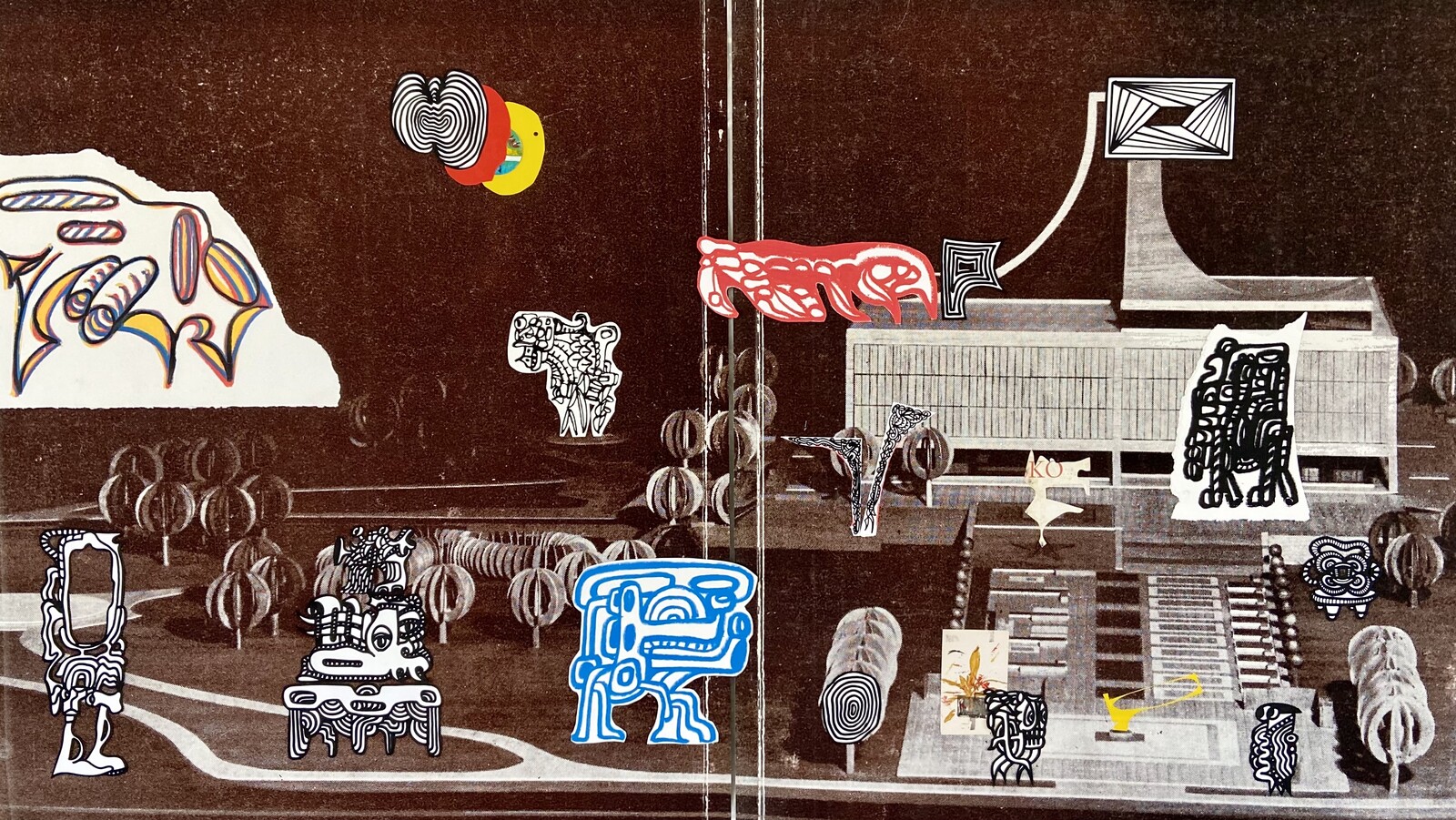Heliopolis
May 18–October 20, 2024
Via Giordano Bruno 31
10134 Turin
Italy
T +39 011 318 2235
On Friday May 17, the PAV is pleased to present Heliopolis, a solo exhibition of the Croatian artist Marko Tadić (1979) curated by Marco Scotini. The exhibition is part of the annual programme that sees reusing and circularity not only as an ecological and cultural strategy but, above all, as a utopian means of survival.
Marko Tadić’s work rereads the history of Yugoslavian socialist modernism by means of a comparison with the practices of the great authors who were producing at the end of the 1950s in Croatia, amongst whom were the avantgarde designer, sculptor and architect Vyaceslav Richter (1917–2002) and the filmmaker Vladimir Kristl (1923–2004) from the Zagreb School of Animation, acknowledged as one of the cornerstones of the European environment. Using a methodology that tries to “make History starting from the waste of History”—as Walter Benjamin would have said, quoting Goncourt—Tadić identifies, from within the inert residues of memory, an active potential that can be used to reread and generate new possibilities of narration. Through the reusing and reworking of old objects, such as postcards, geographic maps, slides, notebooks and personal photographic archives, Tadić brings back into being a submerged archive on which he overwrites.
The exhibition, created specifically for the PAV, includes a nucleus of works by the artist dedicated to the interaction with the thoughts of Vjenceslav Richter, one of the founding members of the EXAT 51 group of avantgarde artists, architects, designers, and theorists active between 1950 and 1956 in Zagreb. Their aim was to promote and achieve a synthesis and intersecting of all forms of art. Richter, a series of whose original works are in the exhibition, dedicated almost two decades of his life to the perfecting of technical-utopian projects within a town planning ambit that attempted to respond, through planning, to the specific needs of a socialist society. In Richter’s utopian city, whatever was required was readily available and its planning responded to the need to reduce mobility times in order to guarantee more free time.
In the exhibition Tadić imagines and plans his utopian city by contaminating Richter’s project with a science fiction imagination and by imposing an ecological reflection on these complex systems. Through drawings, collages, and animations, he hypothesizes an expansion that includes these new issues relating to the relationship between humans, the environment and technology while using renewable resources.
Heliopolis consists of four thematic islands: Leaving the Frame, Flow Diversions, The Open Future and From the Shell (of the Old) in which the relationship between ecology, utopian architecture and science fiction is investigated by means of a multi-layered perspective. By varying the scale by means of which a system is represented, it is possible to enrich our understanding of it and formulate new readings. Using miniaturisation, Tadić transforms detritus and scraps into toys in a Benjamin type sense. “Collective products” that recall a comparison with the world of the adult that allows them to be liberated without being deprived of their value as documents.
In Heliopolis, Marko Tadić’s work rereads Vjenceslav Richter in order to propose a model that aims to establish a harmonious rhythm to society’s metabolism, in the continuous search for a delicate equilibrium between construction and cancellation, between possible futures and the transmitting of memory.
Marko Tadić (Croatia, 1979) studied painting at the Academy of Fine Arts in Florence. His artistic practice goes from drawings to installations and animations. The winner of numerous international prizes, in 2015, he received the Vladimir Nazor prize (Croatia) for the best exhibition and, in 2008, the Radoslav Putar Award (Croatia) as the best young contemporary artist. He has participated in numerous residences in Helsinki, New York, Los Angeles, Frankfurt, and Vienna. He has collaborated with the Art Academy in Zagreb as a tutor in a workshop on artists’ portfolios, field recordings and radio drama. He teaches at the Academy of Fine Arts in Zagreb and at the Nuova Accademia di Belle Arti NABA in Milan. His films have been shown at various international festivals of film animation and experimental films. In 2017, he represented Croatia, together with Tina Gverović, at the 57th International Art Exhibition, the Venice Biennale.
This exhibition has been realized in collaboration with Museum of Contemporary Art Zagreb and is supported by Compagnia di San Paolo, the Fondazione CRT, the Regione Piemonte and the City of Turin.
Part of New Perspectives for Action. A project by Re-Imagine Europe, co-funded by the European Union.




